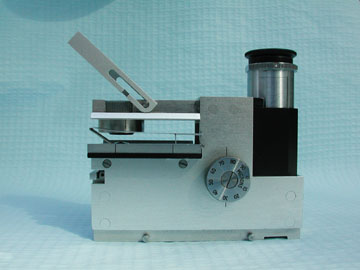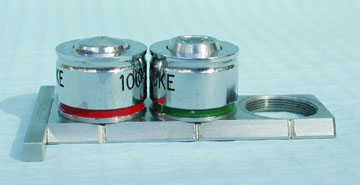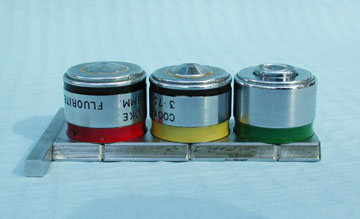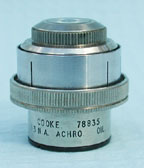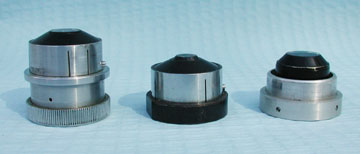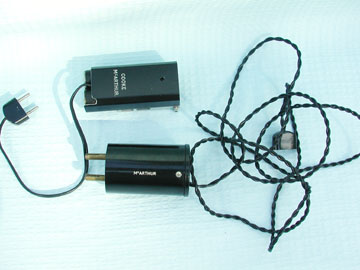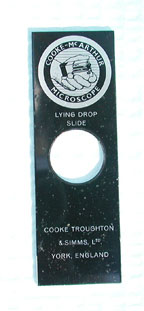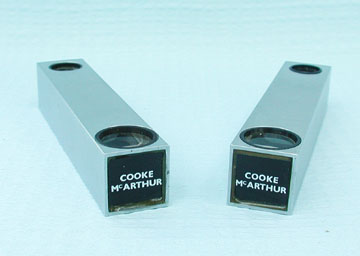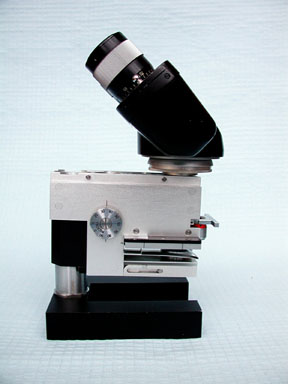Since reading previous Micscape articles as well as searching the Internet for information on the many accessories that have been made for the McArthur microscope, it seemed pertinent to show you some accessories that I have recently acquired. I have recently added to my collection a McArthur microscope made by Cooke, Troughton & Simms (CTS) and some accessories that I have only before seen in trade leaflets.
First, let me show you the microscope which will be familiar to many of you.
The eyepiece is a CTS and has a magnification of 7X. The objective slider contains 3 Cooke objectives; a 16mm n.a. 0.2 achromat, 8mm n.a. 0.45 and 1.8mm n.a. 1.3 oil immersion. The condenser is a LP with iris diaphragm and there is only one stage clip.
Here come the goodies;
A slider with 40X n.a. 0.65 phase and 100X n.a. 1.3 phase objectives.
A slider with 4mm n.a. 0.65, 3.75mm Fluorite n.a. 0.95 oil immersion and a 1.8mm Fluorite n.a. 1.3 oil immersion objectives.
An n.a. 1.3 achromatic oil immersion condenser in its own metal container (not shown).
Left; HP condenser with iris diaphragm. Centre; Phase condenser with a 40X and 100X phase annuli. Right; Reflecting dark ground condenser.
Top; lamp housing with batteries and a lead with plug. The mains transformer attaches to the lamp lead to provide low voltage DC power. There are 6 spare bulbs (not shown).
This is a lying drop slide is made from aluminium and measures 76mm X 25mm and has an aperture of 16mm in diameter. I presume that a round 16mm coverslip should be glued to the base of the aperture (but is missing). This type of slide was produced to perform automatic focussing where the shallow thickness of the coverslip enables the specimens to be (almost) always in focus when using various objectives.
Left middle; is a metal stand. Top right; is a traversing stage. This type of stage allows movement of slides sideways and forward/backwards and with practice, limited diagonal direction. Bottom right; 2 tubes containing funnel stops for objectives when used with dark ground illumination.
Two spare light tubes that attach to the base of the microscope enabling the light to be 'folded' to achieve the correct tube length. One has a red dot and the other a green dot. I do not know for what type of set up these are used for. The microscope already has one with a black dot.
Left; A Kodak Colorsnap 35 camera. I do not know if this was supplied and/or recommended by CTS.
Right; a CTS binocular head without eyepieces.
This is the McArthur microscope mounted upside down onto a metal pillar above the stand with the binocular head attached. When I get a pair of eyepieces I will try to use it in this format. I presume that one of the light tubes (above) should be inserted into the base of the microscope to enable the binocular head to be used.
For more information contact the author Michael Dingley.
Check out my CD-ROM Catalogue of Portable Microscopes at http://www.pnc.com.au/~dingley.
Check out my web page on Desmids at http://www.desmids.info.
